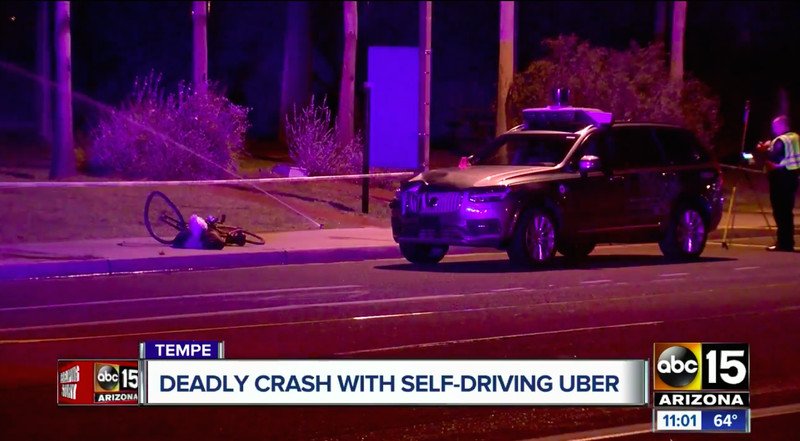Safety driver of fatal self-driving Uber crash was reportedly watching The Voice at time of accident

Police in Tempe, Arizona, have released a new report regarding Uber's fatal self-driving car crash last March, which reveals that the safety driver Rafaela Vasquez was streaming The Voice on Hulu on her phone at the time of the accident, via Reuters.
The crash killed 49-year old Elaine Herzberg, who was crossing the street with a bicycle when Uber's self-driving test car struck her at 39 mph. Why the car failed to avoid her has been the subject of scrutiny from both officials and the wider industry. The Tempe Police Department's 318-page report of its investigation of the incident found that Vasquez's Hulu account was watching the show for 42 minutes prior to the crash, right up until the time the accident occurred. According to the National Transportation Safety Board's (NTSB) timeline of the crash, that means that Vasquez would have started watching her show within minutes of starting the drive.
The report claims that the crash was "entirely avoidable" had Vasquez been paying more attention. Vasquez could face charges of vehicular manslaughter, although police haven't said whether or not she will be charged yet.
In a video of the crash released by police officers, Vasquez can be seen looking down in front of her for several seconds before the crash. Vasquez had previously told investigators from the NTSB that she had been "monitoring the self-driving system interface," which is displayed on an iPad mounted on the vehicle's center console, at the time of the crash. She also said that both her personal and business phones were with her in the vehicle, but neither was in use until after the crash.
Uber says that in the past it didn't monitor its safety drivers in real time, although it did perform spot checks to try and make sure they were following the rules. It also says a handful of drivers were previously fired for using a cell phone while operating test cars, though it didn't say exactly how many. In a statement released to The Verge, an Uber spokesperson commented that "We continue to cooperate fully with ongoing investigations while conducting our own internal safety review. We have a strict policy prohibiting mobile device usage for anyone operating our self-driving vehicles. We plan to share more on the changes we'll make to our program soon."
One of the main reasons that the company places safety drivers in its test vehicles in the first place is to intervene in situations like this. According to the NTSB's preliminary report on the incident, Uber's self-driving car was able to detect Herzberg as she was attempting to cross the road but failed to brake. Per that report, the car's radar and LIDAR sensors were able to detect an object in the path of the vehicle — Herzberg — about six seconds before the crash, but it misclassified her as an unknown object, then a vehicle, then finally a bicycle. At 1.3 seconds before impact, the system tried to initiate an emergency braking maneuver, but Uber had deactivated the vehicle's factory-equipped automated emergency braking system to help ensure less erratic testing.
In the wake of the crash, Uber suspended all self-driving tests in the state of Arizona, although Uber CEO Dara Khosrowshahi said in May that the company plans to resume self-driving tests in a few months and is still "absolutely committed to self-driving cars."
Related News
